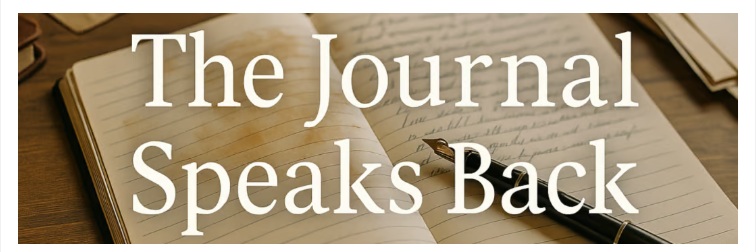
Editor’s Note: This is the 4th installment in our series “The Journal Speaks Back” in which Menomonie resident John Wilkerson invites you to join him in his love for journaling.
We tend to think that journaling requires us to have a notebook, a paper reservoir of the important thoughts that percolate in our heads. I have stacks of journals. Some are filled with notes of books I’ve half written; others are filled with pencil scratches that I can no longer decipher. Nowadays, I rarely write journals on paper.
During my university years, I struggled with notetaking. I was plagued with the belief that you had to keep your words contained within the lines on the paper. As I transferred my thoughts to the lined paper, I found that I forgot what I was thinking and instead became fixated on making everything fit. Fit as I would write smaller, with a clumsy hand. Bad grades… a cycle of stress and writing even smaller because I thought I just needed to cram more words onto the page.
Trying to force the words onto the page closed off the emotional side of my writing. The page became a testament to survival, not one for learning.
At the time I fancied myself to be an analytical thinker, and of course, I should be able to write within the lines. That was why there were lines, right? Wrong. Some people thrive on lined paper. Others of us think of the lines as prison bars.
Plain, white paper might be the new friend you need to invite into your journaling practice. If the plain paper comment excited you, consider going one step further. You can draw pictures, too. Colored pencils and pens add a lot of intrigue to your writing. You are not bound by just words.
Think of the Victorian travel journals from more than a century past. Many of those journals were filled with watercolor paintings and charcoal sketches. We can do the same.
My grocery list is on old envelopes because they are already the correct size to fit in my pocket. They’re also blessedly free of lines and anything to distract my mind from writing “eggs.” If I use lined paper, I will stress over the double “g” swinging below into the next space. It seems crazy to fixate on this but some of us do.
This is the point in most conversations where the person tells me they stopped journaling because they never have their notebook with them. I’m the same way, no book, no writing.
To solve this, I moved to digital journaling. My smartphone, laptop, and even the old laptop I have connected to the TV are all connected via a singular notetaking app. This is not cheating; it’s survival. This allows me to write anywhere I have a screen. Every few days, I move my notes into a large word processing document and hit save.
Do I miss the plain white paper? Oh, yes. I miss the scratch of the pencil on the paper. I do however consider it a more than an equitable tradeoff to be able to write anywhere and anytime. It was a process decision for me.
Keep in mind that you’re looking to create a memory. An art teacher told me once, “the purpose of art is to generate emotion.”
Writing is an art form. Journaling is art. The medium you choose, be it lined paper, plain paper, or a digital notetaking app…you are the artist. You are free to choose whichever medium you wish to pursue.
Let your weird show. Draw pictures, doodles, connect lines, it doesn’t matter as long as you scribble something.
Today’s assignment
Get a piece of copier paper and a handful of colored pens and pencils. Write!
Today I tried something new…
John Wilkerson works most days writing and fiddling with his computer. His new, old, home in Menomonie is constantly subjected to DIY mayhem. His background includes ghost writing, newspaper reporting, and a long stretch in marketing and advertising.
John may be contacted at: [email protected]
